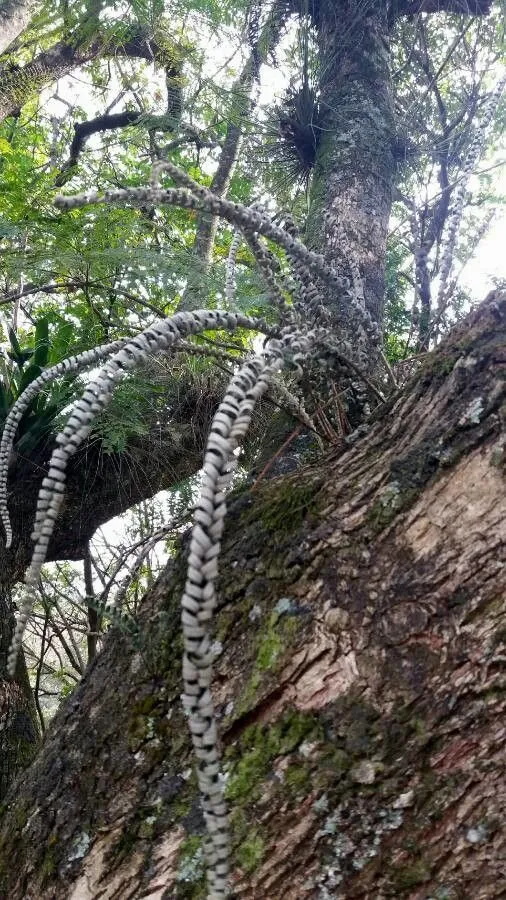
Author: (L.) Britton, Sterns & Poggenb.
Bibliography: Prelim. Cat.: 73 (1888)
Year: 1888
Status: accepted
Rank: species
Genus: Asplenium
Vegetable: False
Observations: E. Canada to C. & E. U.S.A., S. Africa
Ebony spleenwort, scientifically known as Asplenium platyneuron, is a distinctive and widespread fern belonging to the family Aspleniaceae. This species has garnered interest not only due to its unique appearance but also because of its extensive geographical range.
Characterized by its slender, dark brown to ebony-colored stems—as its common name suggests—the ebony spleenwort is an elegant perennial fern. Each frond is composed of a central rachis with paired leaflets, also known as pinnae. These pinnae are arranged alternately and exhibit a glossy dark green color, contributing to the plant’s overall graceful and somewhat regal appearance.
Asplenium platyneuron is native to a broad region, stretching from Eastern Canada down through Central and Eastern United States, and even extending into South Africa. This wide distribution speaks to the plant’s versatility and adaptability in varying climatic and ecological conditions.
First documented in the “Preliminary Catalogue” of 1888, this species has been a point of study and admiration over the years. The collaborative work of botanists including L., Britton, Sterns, and Poggenburg has contributed significantly to our understanding and classification of the plant.
Ecologically, the ebony spleenwort typically thrives in shaded, moist environments such as forested areas, rocky outcrops, and even disturbed soils. It has a preference for acidic substrates, often found growing amidst leaf litter or in crevices of rocks, making it a hardy specimen well-suited for naturalistic landscaping in areas that can mimic its native habitat.
Beyond its ornamental appeal, Asplenium platyneuron plays a role in its native ecosystem by contributing to the biodiversity and structural complexity of the fern understory. It also serves as an indicator of environmental health, given its sensitivity to changes in habitat conditions.
In conclusion, the ebony spleenwort represents a remarkable intersection of natural beauty and ecological importance. Whether admired in the wild or cultivated in a garden, this fern continues to be a plant of both scientific interest and aesthetic value.
Eng: ebony spleenwort
Fra: doradille ébène, doradille à nervures plates
En: Ebony spleenwort
Fr: Doradille Èbène, Doradille ébène, Doradille à nervures plates
Taken Jan 1, 1900 by EOL − Encyclopedia of Life (cc-by-nc)
Taken May 17, 2015 by EOL − Suzanne Cadwell (cc-by-nc)
Taken Jul 29, 2015 by EOL − grbfrog (cc-by-nc)
Taken Dec 12, 2020 by Shehadi Ramiz (cc-by-sa)
Taken Jun 18, 2022 by Francisco Donoso (cc-by-sa)
Taken Oct 14, 2020 by jeff boot (cc-by-sa)
Taken Oct 14, 2020 by jeff boot (cc-by-sa)
Taken Sep 11, 2020 by Valverde a Leo (cc-by-sa)
Taken Mar 24, 2020 by Tenang Marak (cc-by-sa)
Taken Apr 5, 2021 by Craig Schneider (cc-by-sa)
Taken Jun 18, 2022 by Francisco Donoso (cc-by-sa)
Taken Jun 18, 2022 by Francisco Donoso (cc-by-sa)
Taken Nov 1, 2015 by EOL − yaoshawn (cc-by-nc)
Taken Dec 8, 2014 by EOL − Nicholas (cc-by-nc)
Taken Oct 19, 2015 by EOL − Bob O’Kennon (cc-by-nc)
Taken Nov 16, 2015 by EOL − Susan Elliott (cc-by-nc)
Taken Dec 23, 2015 by EOL − Tomas Curtis (cc-by-nc)
© copyright of the Board of Trustees of the Royal Botanic Gardens, Kew.
Growth habit: Forb/herb
Family: Myrtaceae Author: (F.Muell.) K.D.Hill & L.A.S.Johnson Bibliography: Telopea 6: 402 (1995) Year: 1995 Status:…
Family: Rubiaceae Author: Pierre ex A.Froehner Bibliography: Notizbl. Bot. Gart. Berlin-Dahlem 1: 237 (1897) Year:…
Family: Sapindaceae Author: Koidz. Bibliography: J. Coll. Sci. Imp. Univ. Tokyo 32(1): 38 (1911) Year:…
Family: Asteraceae Author: A.Gray Bibliography: Pacif. Railr. Rep.: 107 (1857) Year: 1857 Status: accepted Rank:…
Family: Fabaceae Author: Medik. Bibliography: Vorles. Churpfälz. Phys.-Ökon. Ges. 2: 398 (1787) Year: 1787 Status:…
Family: Aspleniaceae Author: (Cav.) Alston Bibliography: Bull. Misc. Inform. Kew 1932: 309 (1932) Year: 1932…